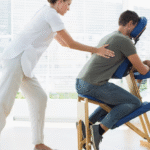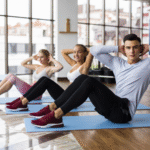Athletes push their bodies to the limit. Whether it’s running, lifting, swimming, or playing competitive sports, the body experiences constant strain, micro-tears in muscles, and stress on joints. While training and nutrition play a massive role in performance, recovery is equally important. One of the most effective ways athletes speed up recovery is through massage therapy.
But not all massages are the same. Each technique has its own benefits, timing, and purpose. If you’re an athlete or a fitness enthusiast, understanding which massage therapy suits your recovery goals can make a huge difference in your performance and overall well-being.
In this guide, we’ll explore the best massage therapy options for athletes’ recovery, their benefits, when to use them, and how to integrate them into your routine.
Why Recovery Matters for Athletes
Recovery isn’t just about feeling less sore. It’s a science-backed process that helps your body adapt to training, prevent injuries, and improve long-term performance. Without proper recovery, athletes face:
- Chronic fatigue
- Increased injury risk
- Decreased performance
- Mental burnout
Massage therapy works by improving circulation, reducing muscle stiffness, boosting flexibility, and even helping with mental relaxation. This is why professional athletes often have massage therapists as a regular part of their training team.
Different Types of Massage Therapy for Athletes
Let’s break down the most effective massage therapies and how they help athletes recover.
1. Sports Massage
This is the gold standard for athletes. Sports massage is specifically designed to target muscles used during physical activity. It includes a mix of deep tissue techniques, stretching, and rhythmic movements.
Benefits:
- Speeds up recovery after workouts
- Improves flexibility and range of motion
- Helps prevent injuries
- Reduces lactic acid buildup
Best time to use:
- Before events (to warm up muscles)
- After intense training or competitions
2. Deep Tissue Massage
Deep tissue massage works by applying slow, firm pressure to reach deeper layers of muscles and connective tissues. It is especially helpful for athletes dealing with chronic pain or injuries.
Benefits:
- Breaks down scar tissue
- Relieves chronic muscle tension
- Improves blood flow for faster healing
Best time to use:
- During recovery days
- For treating long-standing injuries or knots
3. Swedish Massage
Swedish massage is one of the most popular and gentle forms. Unlike deep tissue, it uses lighter strokes and focuses more on relaxation.
Benefits:
- Promotes relaxation
- Reduces stress and anxiety
- Improves overall circulation
Best time to use:
- On rest days
- After tournaments to calm the body and mind
4. Trigger Point Therapy
Athletes often deal with “knots” or tight spots in muscles, known as trigger points. This therapy focuses on pressing and releasing those exact areas.
Benefits:
- Relieves localized pain
- Improves range of motion
- Targets problem areas like shoulders, hamstrings, or calves
Best time to use:
- When feeling sharp pain in a specific area
- For chronic muscle tightness
5. Myofascial Release
Fascia is the connective tissue that surrounds muscles. Sometimes it becomes tight and restricts movement. Myofascial release focuses on stretching and loosening fascia.
Benefits:
- Improves mobility
- Enhances flexibility
- Reduces stiffness
Best time to use:
- During recovery weeks
- For athletes needing more flexibility
6. Shiatsu Massage
Shiatsu is a Japanese technique using finger pressure on specific energy points. While it’s more holistic, athletes often use it for recovery and stress relief.
Benefits:
- Relieves muscle fatigue
- Restores body balance
- Promotes relaxation and mental focus
Best time to use:
- Between training sessions
- When dealing with stress or low energy
7. Cupping and Percussion Therapy (Modern Approaches)
Many athletes today use modern massage aids like cupping or percussion guns. These therapies improve circulation and loosen stiff muscles quickly.
Benefits:
- Speeds up recovery after heavy workouts
- Easy to use at home
- Improves blood flow and lymphatic drainage
Best time to use:
- Post-training recovery
- As a supplement to traditional massage
How Often Should Athletes Get Massage Therapy?
There isn’t a one-size-fits-all answer. The frequency depends on training intensity and goals.
- Professional athletes: 1–2 times per week
- Recreational athletes: Every 2–3 weeks
- During intense training camps: More frequent, even daily short sessions
Table: Best Massage Therapies by Recovery Need
| Recovery Need | Best Massage Therapy | When to Use |
|---|---|---|
| Quick post-workout recovery | Sports massage, percussion therapy | Right after training |
| Deep muscle soreness | Deep tissue, trigger point therapy | On recovery days |
| Relaxation & stress relief | Swedish, Shiatsu massage | On rest days |
| Flexibility improvement | Myofascial release, sports massage | During off-season |
| Injury rehab | Deep tissue, trigger point | With professional guidance |
Extra Benefits of Massage for Athletes
- Improved Sleep Quality – Massage calms the nervous system, helping athletes sleep better.
- Enhanced Mental Focus – A relaxed mind means better concentration during games.
- Injury Prevention – Regular massages keep muscles loose and joints mobile, lowering the risk of strains.
- Boosted Immune Function – Good circulation supports the body’s defense system.
Tips for Getting the Best Out of Massage Therapy
- Communicate with your therapist – Always tell them about sore spots, injuries, or training goals.
- Hydrate well – Drink water before and after sessions to flush out toxins.
- Don’t overdo it – Too much deep tissue massage can leave you sore. Balance is key.
- Combine with stretching – Pair massage with yoga or dynamic stretching for maximum benefit.
- Be consistent – Recovery works best when massage becomes part of your regular routine.
Conclusion
Athletes often think progress comes only from hard training, but the real secret lies in smart recovery. Massage therapy is more than just relaxation — it’s a powerful tool for improving performance, preventing injuries, and keeping the body in peak condition.
From sports massage for event prep to deep tissue therapy for muscle repair, choosing the right technique at the right time can transform your athletic journey. If you’re serious about recovery, make massage therapy a consistent part of your routine — your body and performance will thank you.
FAQs About Best Massage Therapy for Athletes Recovery
Q1. What is the best type of massage for athletes after intense training?
Sports massage is the most effective for post-training recovery as it helps reduce soreness, improve blood flow, and prevent injuries.
Q2. Can massage therapy replace stretching for athletes?
No, massage therapy complements stretching but doesn’t replace it. Stretching improves flexibility, while massage focuses on muscle relaxation and circulation.
Q3. How long should an athlete’s massage session last?
For recovery, sessions usually last between 45–90 minutes depending on the type of massage and athlete’s needs.
Q4. Is massage therapy safe for injured athletes?
Yes, but it must be done carefully by a trained therapist. For serious injuries, always consult a doctor before getting massage therapy.
Q5. Can athletes do self-massage at home?
Yes, tools like foam rollers, massage guns, and tennis balls can help athletes manage muscle soreness at home between professional sessions.
✅ Title suggestion:



